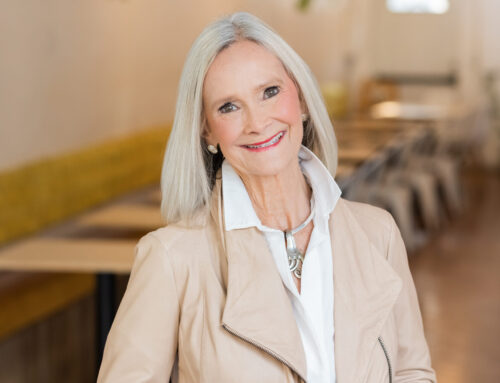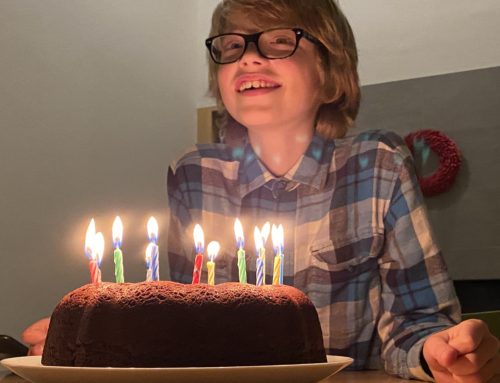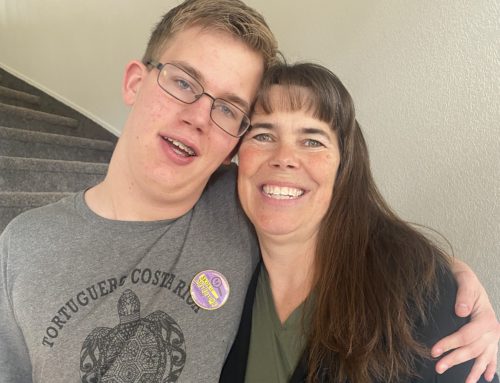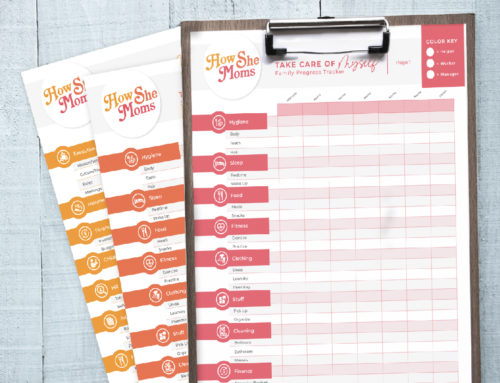By Leisle Chung, as told to Whitney Archibald
I’ve always been a goal-oriented and highly organized person—it’s who I am. Add to that an MBA and background in business, and it’s no surprise that once I became a mother it didn’t take long for me to start planning that part of my life as well. I thought, “Businesses have plans—we should have a plan for our life.”
My husband, Vinh, is a good sport, so he went along with it, and now he’s really glad that we do this. We call it—big surprise—The Life Plan, and we’ve been updating it each year for more than ten years now.
Our plan has had a significant impact on our lives, helping us to have a unified vision for the future and making sure our short-term and long-term goals align. I think a lot of people have a vision of where they want to be over a certain amount of time, but then they live their lives and go in all different directions. If you’re not intentionally staying on a specific path toward that vision, it’s easy to drive in whatever direction life takes you and then you end up in Kansas instead of Maine. (Not that I have anything against Kansas.)
The Plan
Now every year, usually in December or January, we dedicate a weekend to life planning. We go away to a scenic place, put the kids into fun activities for the day like ski school, and we spend our day planning. The kids have come to expect this and it’s just normal to them.
We always make sure to schedule this planning weekend when we’re in a good place—with our family and with each other—so we know we can focus on it without distractions from work or personal stress. We want to make sure we’re in a hopeful frame of mind. So there have been times when we’re going through a rough season and we don’t do it until the beginning of February so we can make sure we’re in just the right place. We feel like it’s really important to be in a place where we’re really hopeful and connected.
Then we sit down together to update our plan. We start by pulling up the Word document with the previous year’s plan. Our plan has several sections, broken down both by time and by category. We always start by looking at our 30-year-goals in each category: Personal, Marriage, Family, Extended Family and Friends, Community/Charity, and Professional. For example, in the category of Marriage, we talk about what we want our relationship to look like in 30 years. The end goal is to remain best friends, deeply in love, and still enjoy spending time together.
Our 30-year goal for our family is that that our children and their families love to spend time together and that our children live lives that are full of meaning, purpose and courage. Our faith is very important to us, so we also hope that we’ll all be followers of Jesus.
Our 30-year professional goals are to look back on our professional careers and be proud of what we’ve built and the impact our professional careers have made in the lives of others.
While we revisit our goals every year, we’ve found that our 30-year goals remain the same year-over-year. That big picture doesn’t change, even though the path does. My original career goal was to reach partner at my consulting firm and then go on and take an operating role at a company, so it looked very different from what I’m doing now, which is working with my husband to run our medical practice. But I feel like I’m still on my path to reach my 30-year professional goal.
So the short-term plans change, but not the 30-year plan. We know where we want to be in 30 years, so we just do what we can to move in that direction.
Next, we reflect on the prior year and what we’re proud of and then evaluate our future ten-year, three-year, and one-year goals. This is a great time to talk about what is going well, what the next steps are, and what we want to change. Our one-year goals obviously change every year, and we always evaluate whether our ten-year and three-year goals need some revision as well.
For example, one of our categories is our extended family. When Vinh’s Dad passed away last year, it caused us to reevaluate our extended family goals, so this year we set one- and three-year goals to spend more time with our parents. We decided to go on a family vacation with my parents and a vacation with Vinh’s mom. We also wanted to make sure we made it back to Arkansas more often to visit his mom. So that’s an example of a life event that really changed what our one- and three- year picture looked like, to make sure we spent more time with our parents while they’re still with us.
By the time we’re done with our life-planning weekend, we come home with a new plan for the year, reinvigorated and recommitted to helping each other reach our goals. Then we do less formal mid-year check-in, where we just pull up the file together and check on our progress with our goals.
Then at any time during the year, if something happens that makes us decide that we need a reset, we revisit our goals. This year is a good example. We made our plan in December, but then some significant family events happened, and we decided that Vinh was going to step down from board of a humanitarian organization that the family is deeply committed to (see “Chung Family Culture” below). We had to start shedding a lot of our responsibilities to make room for some personal things. If something significant happens with our kids, or health or other family members we adjust our plans. We’re still on our path to reach the 30 year goals, but sometimes you have to change near term plans to make sure you are still moving towards long term goals.
There’s actually a challenge that comes along with both Vinh and I being so goal oriented. We’re really focused on moving our kids in the right direction and helping them reach their full potential. But our plans seem to be very achievement-oriented, so we also have to be very careful about leaving space to play and enjoy.
In the last three years, we realized that our plan was so action-oriented that we needed to start building some of this space right into our plan. A great example of this is that we committed in our plan to make time to be home every night for dinner. Occasional things come up, but those should be rare. And even if we have to get back on our computers and work after the kids are in bed, dinnertime is protected time. That has forced us to move away from being goal-oriented and achievement oriented by creating the goal of space and time. It’s in those spaces of unplanned time that you end up with memorable moments and spontaneity like joke nights when dad can’t stop laughing long enough to finish a joke and family dance parties complete with disco lights.
Our oldest son is also very goal-oriented, so much that I actually set personal goals with him about being less goal-oriented. “Let’s calm down and relax a little bit.” One of the goals that we actually set for with him to “fail and fail well.” We want him to take risks and learn to fail, to learn that when they do fail it does not say anything about who he is or what he is worth—he’s still important regardless of whether he succeeded or failed at something. It’s a lesson we want all of our children to internalize.
Cultivating a Generous Family Culture
Clearly we are a goal-setting family, but we want to use these goals to establish certain values that are pillars and guideposts in their lives: we always try hard, we always do our best, we live with integrity, we don’t lie. You always do the right thing no matter what, because you’re in the Chung family.
We also teach the kids to work hard. Everyone has their set chores like taking out the trash and shoveling snow and doing the dishes. They also have to take care of themselves. I make sure they have a lunch, but they’re in charge of snacks and a water bottle and if they forget, they just don’t have snacks or water for the day. If they don’t put their lunch in their backpacks, they just don’t get lunch. They have to do their own homework and turn it in without prompting from us.
But if you were to ask our kids what really makes our family different, they’d say that we’re generous. We have a vested interest in humanitarian service in our family, because a humanitarian organization, World Vision, is the reason our family exists in the first place. When Vinh was only three years old a boat from World Vision rescued him and his refugee family from an overcrowded boat set adrift off the coast of Malaysia after they escaped from Vietnam. You can see more about his story in this video:
As a family and as a business we raise money and volunteer internationally. We also support many community humanitarian organizations, and took a humanitarian trip to Haiti last year.
Our goal for teaching our kids generosity is to shape their hearts, not their actions. So we’ve really encouraged them to give from their hearts. And that has looked different for each child, based on how they’re wired. A few years ago, our oldest son got really excited about running a half marathon for World Vision for their water projects. That fits so well with who he is. He’s goal-oriented; he gets to have a concrete plan—I’m going to run, I’m going to raise money, and that will help kids get clean water. That just appeals to him. And he’s also asked if he could start volunteering at a nursing home because he loves to sit and talk to people and hear their stories. That also fits who he is.
Our second child is very different. He just has this really kind heart, and he really connects with people, so he asked if he could sponsor a child in Rwanda. While we encourage all of our kids to give 20% of their allowance to charity, he started spending his entire allowance each month to sponsoring a child. Soon he decided he wanted to sponsor a second child, but he didn’t have enough money. So I made a deal with him. He now works six hours a month for our family company, Vanguard Skin Specialists, and I pay to sponsor the second child.
He has a very personal relationship with these kids that he sponsors. He writes letters to them and prays for them. When one of his kids got malaria last year, Luke cried. They’re his little friends and are an active part of his life. Giving looks different for him.
Living with Gratitude
While much of my advice is about planning, I must admit that I strive to plan less, control less, and lean into my faith more. The downfall of being a planner like me is that sometimes you don’t slow down enough to live in the moment. The downfall of a perfectionist like me is that you fear not being in control. What has helped me in this regard is to practice gratitude. Someone once told me that the opposite of fear is gratitude; when you feel gratitude, you don’t feel afraid.
I’m fortunate to have role models in this regard. I’m deeply grateful to my parents and my grandparents, who lived during a time of war and immigrated to the U.S. in difficult circumstances. It’s only because of their sacrifice that I have the luxury of planning and dreaming. It is also because of them that I know even when the best laid plans do not come to be and even when life brings sorrow, you can live a beautiful life filled with meaning. They have shown me that’s possible.
So, do I think that a Life Plan has helped us and that it would help you? Absolutely. But in those times when things just don’t go to plan, I hope all of us continue to live with gratitude.
About the Author
Leisle Chung is a wife and the mother of four children, three boys and a girl. She grew up on a farm in rural Arkansas, and then attended Yale College and Harvard Business School. She spent 8 years in strategy consulting and is currently the Executive Director of Vanguard Skin Specialists, working with her physician husband. She is also the director of clara which donates all profits to charitable organizations for women and children. She and her husband sponsor projects in Asia, Africa, and Central America to protect children, provide clean water, and build economic opportunities.










Leave A Comment